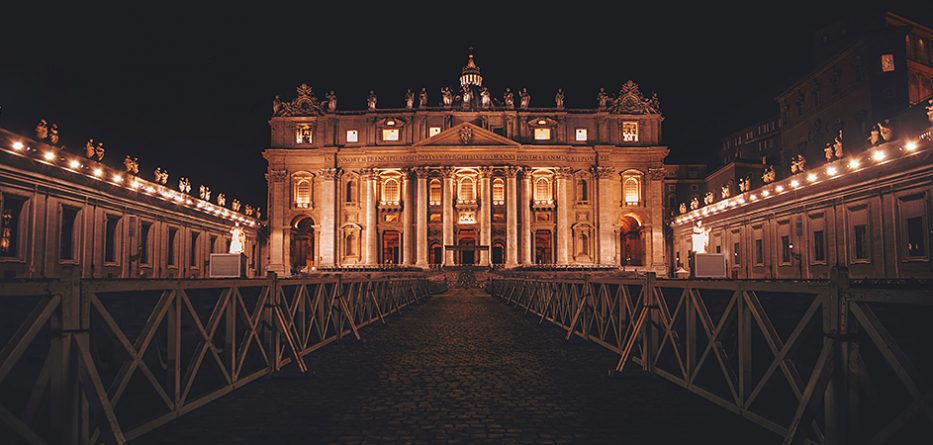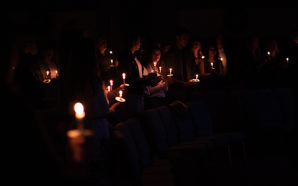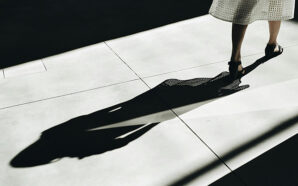The Pope’s struggle to re-establish the central place of Vatican II in the life of the Church and those who are fighting to stop him
Pope Francis knows how to cause a stir with his statements.
But even when the current Bishop of Rome says things that should not be newsworthy, they are objectively relevant in the context of the embattled Catholic Church of today.
One example: the Pope recently said that the Second Vatican Council (1962-65) shaped his theological and pastoral vision.
He did so in the preface of a new book called, Fraternità segni dei tempi, which was co-written by Cardinal Michael Czerny, one of his fellow Jesuits and top Vatican official, and Christian Barone, an Italian priest and theologian.
The English translation is called, Siblings All, Sign of the Times: The Social Teaching of Pope Francis. It will be published in 2022 by Orbis Books.
Greater insistence on the centrality of Vatican II
“It is necessary to make more explicit the key concepts of Vatican Council II, the foundations of its arguments, its theological and pastoral horizon, the arguments and the method it used,” Francis writes in the preface.
This was not an off-the-cuff remark, but a written statement in a book published by the Vatican’s printing house and reported on September 28 by its official media outlet, Vatican News.
Why is the Pope’s statement on Vatican II so newsworthy?
The organized opposition to Francis did not react as usual by alleging that the Jesuit pope had said something unorthodox or had yielded to the liberal and secularist spirit of the time.
That’s not because it would be very conspicuous for Catholic leaders — cardinals and bishops especially — to distance themselves from the Church’s 21st ecumenical council. Just the opposite.
Francis vs. the anti-Vatican II crowd
They didn’t need to react. It is enough to do a search online in conservative and traditionalist circles, as well as their publications and theological self-help websites, to get an idea of the magnitude of the problem.
These groups simply identify Vatican II with selling out Catholic identity and weakening the sense of the tradition. Other times, they use Vatican II as a synonym for relativism, neo-paganism and heresy.
It’s not just social media or EWTN. (I am not linking to those websites because they don’t deserve free advertisement).
Pope Francis has done — and is doing — much to change this situation.
It is impossible to ignore how much impact this pontificate’s words and deeds have had in restoring the place and reputation that Vatican Council II deserves in the discourse in the Church, but also in the discourse on the Church in mainstream media.
An uphill battle for the coming generation
Most recently, his “motu proprio” Traditionis custodes — which reversed Benedict XVI’s decision in 2007 to universalize use of the “extraordinary form” (pre-Vatican II) of Mass in the Roman Rite — is one of the most important acts in the post-conciliar Church to reinforce the binding value of the teaching of the Second Vatican Council.
But it’s an uphill battle that at least another generation of Catholics will have to fight.
It suffices to look at the curricula in the seminaries and the formation programs in many Catholic institutions to see that Pope Francis’ language about and references to Vatican II are the exception, not the norm.
The problem here is not really the absence of the term “Vatican II”. It is the absence of that theological depth in favor of a mix of glossy apologetics, saccharine devotionalism and motivational confessionalism.
In other cases, even in supposedly liberal Catholic schools of theology, Vatican II is no longer part of the curriculum. It has been pushed aside in favor of more fashionable trends.
The deliberate sidelining of the Council
At least in the United States, it is now rare to find a graduate student in Catholic theology that has a basic grasp of Vatican Council II, its history and theology.
Paradoxically, it is less rare to find some knowledge of the Council among Catholic undergraduates.
From what I have seen, they are still learning something about Vatican II in Catholic high schools, but then it gets lost among those who continue to study theology.
They almost never hear anything about the Church’s most recent Council in their parishes.
To paraphrase T.S. Eliot, this is the way a theological tradition ends — not with a bang but a whimper.
It is a fact that the Council’s magisterial texts and theological developments have largely been sidelined in many parts of today’s Church.
Some regret this, but others rejoice, because there is an organized movement behind this sidelining of Vatican II. It’s not just natural or time-induced oblivion.
Francis’ predecessors and Vatican II
John Paul II had a complex relationship with the Second Vatican Council.
His pontificate made a point in making theology more dependent than before on the papal magisterium, in a way that undermined the legitimacy of theological interpretation of Vatican II. But John Paul II was never acquiescent to the direct undermining of the legitimacy of the Council.
Then there was Benedict XVI’s speech in 2005 on the “hermeneutics of continuity and reform” vs. “discontinuity and rupture”.
The now-retired Pope’s intention was to target all forms of dismissal of the texts of Vatican II and not just the Lefebvrists (SSPX). But the speech ended up bolstering the anti-conciliar tendencies of the neo-traditionalists.
These apologists for the restoration of the pre-Vatican II Church took Benedict’s reflections to very scary places that I don’t think Joseph Ratzinger, one of the most important theological periti at Vatican II, could imagine.
The confused narrative of the neo-traditionalists
They decided that the Council not only allowed the sociological crisis of the Church, but that it actually caused the collapse of Catholicism, as if the sociological crisis had not started decades before.
Therefore, according to them, Vatican II needs to be abrogated in some form. But that is impossible according to the norms that govern the way the Catholic theological tradition works.
The neo-traditionalists’ narrative sometimes tries to keep appearances of scholarly seriousness, but it is often mixed with conspiracy theories.
It is also ignorant of history, although quite effective in turning the emphasis on the social and the political back against progressives.
Some of these theories are even cited by bishops in support, for example, of their policies in favor of the return of the celebration of the pre-Vatican II Mass in Latin.
Vatican II: The Battle for Meaning
Pope Francis’ pontificate is embattled, at the theological level, largely and mostly because of his recovery of the Council.
But this battle for the meaning of Vatican II (the title of a book I published nearly ten years ago) will continue well after the end of this pontificate, and it is not for the faint-hearted.
Militant circles have been successful in inverting the meaning of the Council for an ecclesial and ecclesiastical audience that does not follow, trust or care for the institutional communication of the Church.
Vatican II, which was once a synonym of Catholicity, has now become for many Catholics the synonym of heresy. I have seen this in this last 15 years, especially in the United States.
Neo-traditionalist intellectuals and apologists have been able to convince not just militant Catholics in the pew, but also bishops and cardinals.
Wealthy conservative donors – those who now often run the show in many Catholic institutions of higher learning and culture — are an essential part of this picture.
The intellectual crisis of Catholicism
It’s clear that the representatives of a certain “Vatican II sentimentality” have lost control of the narrative. But this is not the biggest problem.
The time has passed for a standard defense of Vatican II which becomes sometimes reluctance, in the name of the Council, to engage the many changes that have taken place in the Church since 1965.
This is why now, more than five decades after the council concluded its work, Pope Francis is insisting that “it is necessary to make more explicit the key concepts of Vatican Council II, the foundations of its arguments, its theological and pastoral horizon, the arguments and the method it used”.
The ecclesial discourse and the way to teach Vatican II need to be updated. But the shifts that have occurred in Catholicism over the last several years point, not to an upgrade, but to a downgrade.
This is part of the intellectual crisis of Catholicism.
Those on the right side of the ideological spectrum blame Vatican II for the social and cultural changes that have marginalized religion, when the Council was actually the magisterial tradition’s best possible attempt up till now to engage secular modernity.
Meanwhile, those on the left rage against anything that sounds institutional. This rage has led, not to liberation, but to diaspora. And it only plays into the hands of those who work for a more exclusionary and sectarian Church.
The attacks against Vatican are problematic for obvious reasons
As we approach next year’s 60th anniversary of the beginning of Vatican Council II, there is an urgent need to address some shortcomings of the conciliar documents on several issues, especially the role of women in the Church.
But that certainly cannot be done with a return to the pre-Vatican II period.
If the neo-traditionalist, anti-Vatican II movement gained momentum in the last generation, it’s also because of the reluctance of Vatican II Catholic leaders, both among the hierarchy and intellectuals, to take the challenge seriously.
The attacks against the Council are problematic for reasons that should be obvious.
What message does the Church send with its dismissal of the conciliar declaration Nostra Aetate at a time when anti-Semitism is again rearing its ugly head?
And what does is say about a Church that has forgotten Dignitatis Humanae in an age when challenges to religious freedom are mounting?
Furthermore, how can the Church neglect Dei Verbum at a moment when the very idea of knowledge as a way to inhabit a tradition is in crisis?
These are but a few examples.
At stake is the viability of the Catholic intellectual tradition – even before the magisterial one.
Massimo Faggioli is Professor of Theology and Religious Studies at Villanova University in Philadelphia. His most recent book is The Liminal Papacy of Pope Francis: Moving Toward Global Catholicity (Orbis Books).
Reproduced with permission from La Croix International and Massimo Faggioli.








